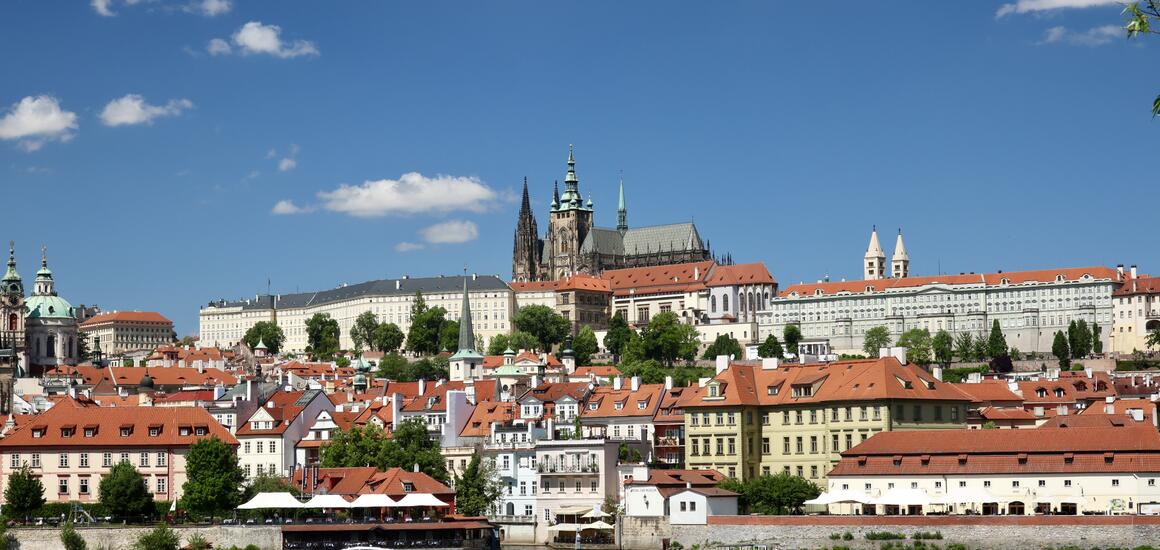
DATE: June 2024
COMMENTARY:
When travelling to another country, whether for a holiday or for a business trip, I think that it is always good to know a bit of the history of the country that you are visiting.
I therefore thought that it would be a good idea to provide visitors to my site with a summary of the history of the Czech Republic/Czechia. If you want to "dig deeper" into history over the centuries, then there are many websites and books available which will allow you to do this. I hope that you will find this summary useful and of interest.
So, without further ado, please see below a hi-level historical summary of this fascinating country which for ease of reading I have divided into sub-sections each with its own title.
A BRIEF HISTORY OF THE CZECH REPUBLIC/CZECHIA
The history of what is now the Czech Republic, also known as Czechia, spans over a millennium and encompasses a diverse and complex narrative of political, cultural, and social changes.
1. Early History and Medieval Period
During the early period of European History and the Medieval period, this area/region of what we no call Central Europe, was settled by various tribes, but it was the arrival of the Slavs in the 6th century that laid the foundation for future the Czech states.
The origins of the Slavs are somewhat obscure, but they are believed to have emerged as a distinct group around the 1st millennium AD. Early Slavs were likely a part of the Indo-European family, with their original homeland situated in the forested areas of modern-day Belarus, Poland, and western Ukraine.
During the early medieval period (5th to 7th centuries AD), the Slavs began to migrate and spread across Europe. This movement was part of the larger Migration Period that saw various tribes moving across Europe, often in response to pressures from the Huns, Goths, and other groups.
The Slavs are divided into three main branches based on their geographical settlement and linguistic characteristics:
-
West Slavs:
- Examples: Poles, Czechs, Slovaks.
- Location: Primarily in Poland, Czech Republic, Slovakia, and parts of Germany.
-
East Slavs:
- Examples: Russians, Ukrainians, Belarusians.
- Location: Mainly in Russia, Ukraine, and Belarus.
-
South Slavs:
- Examples: Serbs, Croats, Slovenes, Bulgarians, Macedonians, Bosniaks, Montenegrins.
- Location: Balkan Peninsula, including countries like Serbia, Croatia, Slovenia, Bulgaria, North Macedonia, Bosnia and Herzegovina, and Montenegro.
Nations and States: Today, the Slavs are represented by several modern nations, each with its own distinct language, culture, and history. They include Poland, Czech Republic, Slovakia, Russia, Ukraine, Belarus, Serbia, Croatia, Slovenia, Bulgaria, North Macedonia, Bosnia and Herzegovina, and Montenegro.
Cultural Influence: Slavic culture has had a profound impact on European art, music, literature, and folklore. Famous Slavic figures include writers like Fyodor Dostoevsky and Leo Tolstoy, composers like Frédéric Chopin and Antonín Dvořák, and many others.
During the 9th Century, the Duchy of Bohemia emerged under the Přemyslid dynasty.
The Přemyslid dynasty was a significant ruling family in Central Europe, particularly in the historical lands of Bohemia (modern-day Czech Republic). The dynasty played a crucial role in the political, cultural, and religious development of the region from the early medieval period until the early 14th century.
In 1004, Bohemia became a part of the Holy Roman Empire but maintained a significant degree of autonomy.
2. Kingdom of Bohemia
In 1212, the Kingdom of Bohemia was officially recognized with the issuance of the Golden Bull of Sicily. The 14th century under King Charles IV saw the kingdom reach its zenith, with Prague becoming the capital of the Holy Roman Empire and a major cultural and political centre.
3. Hussite Wars and Habsburg Rule
The early 15th century witnessed the rise of Jan Hus, a religious reformer whose execution led to the Hussite Wars, a series of conflicts that predated the broader Protestant Reformation. After these wars, the Habsburgs took control of Bohemia in 1526, integrating the region into their vast empire.
4. Thirty Years' War and Aftermath
The 17th century was marked by the Thirty Years' War, sparked by the Defenestration of Prague in 1618. The war devastated the region, and subsequent Habsburg rule imposed strict Catholicism and Germanisation policies, leading to cultural and political suppression.
5. National Revival and Austro-Hungarian Empire
The 19th century saw the Czech National Revival, a movement aimed at revitalizing Czech language, culture, and identity. Following the Austro-Hungarian Compromise of 1867, Bohemia, Moravia, and Silesia remained part of the Austrian half of the empire, but nationalist sentiments continued to grow.
6. Czechoslovakia and World Wars
After World War I, the Austro-Hungarian Empire collapsed, and Czechoslovakia was founded in 1918, with Prague as its capital. The interwar period was marked by significant industrial growth and democratic development. However, the Munich Agreement of 1938 led to the Nazi occupation of the Sudetenland and later all of Czechoslovakia during World War II.
7. Communist Era and Velvet Revolution
Post-World War II, Czechoslovakia fell under Soviet influence and became a communist state in 1948. The Prague Spring of 1968, an attempt to introduce reforms, was crushed by Warsaw Pact troops. The Velvet Revolution of 1989 peacefully ended communist rule, leading to the establishment of a democratic government with Václav Havel as president.
8. Modern Czech Republic
In 1993, Czechoslovakia peacefully split into the Czech Republic and Slovakia. Since then, Czechia has developed into a stable and prosperous democratic nation, joining NATO in 1999 and the European Union in 2004. Today, it is known for its rich cultural heritage, economic vitality, and significant role in Central European politics.
The history of the Czech Republic/Czechia reflects the resilience and cultural richness of the Czech people, who have navigated centuries of change to build a modern, vibrant nation.
[In addition, please kindly see my entries on: (a). The Velvet Revolution; (b). A Short History of Prague; (c). Václav Havel]











Add new comment